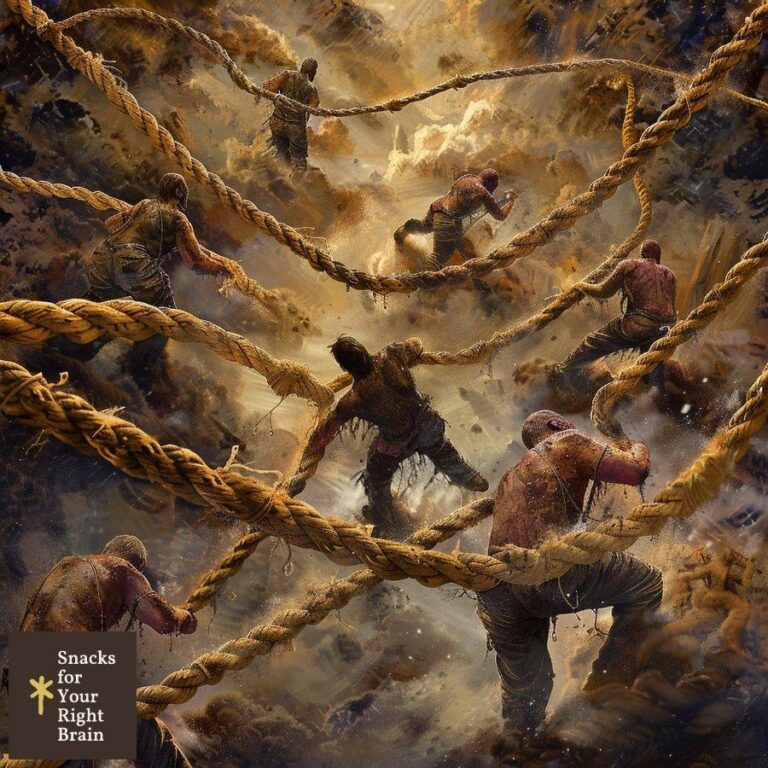What Are Round Characters in a Short Story
What are round characters in short stories?
Round characters are complex and multi-dimensional figures in literature, particularly in short stories. They possess a range of traits, emotions, and motivations that evolve throughout the narrative. Unlike flat characters, who are typically one-dimensional and lack depth, round characters are relatable and realistic, allowing readers to connect with them on a personal level.
Round characters often experience growth or change, reflecting the complexities of human nature. They are not defined by a single trait or characteristic; instead, they embody a variety of qualities, making them more lifelike. This complexity allows for richer storytelling, as the characters’ decisions and transformations can significantly influence the plot and themes of the story.
The portrayal of round characters often involves their backstory, internal conflicts, and relationships with other characters. These elements contribute to their depth and authenticity, making them essential for engaging narratives.
How do round characters differ from flat characters?
Understanding the distinction between round and flat characters is vital for writers and readers alike.
Round Characters:
-
Complexity: Round characters are multi-faceted, exhibiting a range of emotions and traits. They often have detailed backstories that inform their actions and decisions.
-
Development: They undergo significant change or growth throughout the story, reflecting real-life human experiences.
-
Relatability: Readers can identify with round characters due to their realistic portrayal, making their journeys more impactful.
Flat Characters:
-
Simplicity: Flat characters are one-dimensional, often defined by a single trait or characteristic. They lack depth and complexity.
-
Static Nature: They typically do not undergo significant change or development, serving more as background figures.
-
Limited Relatability: Readers may find it challenging to connect with flat characters, as they do not reflect the complexities of real human behavior.
| Character Type | Complexity | Development | Relatability |
|---|---|---|---|
| Round Characters | High | Significant | High |
| Flat Characters | Low | Minimal | Low |
The differences between round and flat characters highlight the importance of character development in storytelling. Round characters enrich the narrative by providing depth and emotional resonance, while flat characters can serve specific roles without the need for extensive development.
What are the characteristics of round characters?
Round characters exhibit several defining traits that contribute to their complexity and depth.
Emotional Range: They display a wide array of emotions, making them relatable. Their reactions to situations are nuanced, reflecting real human responses.
Motivation: Round characters have clear motivations that drive their actions. These motivations can evolve throughout the story, adding layers to their character.
Backstory: A well-developed backstory provides context for a character’s behavior and decisions. This history shapes their personality and influences their relationships with others.
Internal Conflict: Round characters often grapple with internal struggles, such as moral dilemmas or personal fears. These conflicts add depth and create opportunities for growth.
Relationships: Their interactions with other characters reveal different facets of their personality. Relationships can highlight strengths, weaknesses, and changes in the character.
Growth Arc: A significant aspect of round characters is their capacity for change. Whether they learn from their experiences or regress, their growth is a central element of the narrative.
How can writers create compelling round characters in short stories?

Creating compelling round characters requires careful planning and attention to detail. Writers can employ several strategies to develop these characters effectively.
Develop a Detailed Backstory: A rich backstory provides context for a character’s motivations and behaviors. Writers should consider the character’s upbringing, experiences, and significant life events that shape their personality.
Define Clear Motivations: Understanding what drives a character is essential. Writers should establish both short-term and long-term goals for their characters, which can evolve throughout the story.
Show Emotional Depth: Writers should depict a range of emotions in their characters, allowing readers to see their vulnerabilities and strengths. This emotional depth fosters empathy and connection.
Incorporate Internal Conflict: Introducing internal struggles makes characters more relatable. Writers can explore dilemmas that challenge a character’s beliefs or desires, leading to growth or transformation.
Create Dynamic Relationships: The way characters interact with others reveals their complexity. Writers should craft relationships that showcase different aspects of the character’s personality, whether through conflict, support, or love.
Allow for Growth: Characters should experience change throughout the story, whether it’s a positive transformation or a descent into darkness. This growth keeps readers engaged and invested in the character’s journey.
Which famous short stories feature exemplary round characters?
Numerous short stories showcase round characters that resonate with readers due to their complexity and depth.
“The Tell-Tale Heart” by Edgar Allan Poe: The narrator is a classic example of a round character, exhibiting a mix of guilt, paranoia, and obsession. His internal conflict drives the story, making readers question his sanity.
“A Good Man is Hard to Find” by Flannery O’Connor: The grandmother in this story is a multi-dimensional character whose selfishness and eventual moments of clarity reveal her complexity. Her interactions with her family and the Misfit highlight her development.
“The Lottery” by Shirley Jackson: The characters in this story, particularly Tessie Hutchinson, are round in their portrayal. Tessie’s initial compliance and later desperation illustrate her emotional depth and the story’s chilling themes.
“Harrison Bergeron” by Kurt Vonnegut: George and Hazel Bergeron are round characters who embody the tension between individuality and societal conformity. Their internal conflicts and emotional responses to the oppressive society add depth to the narrative.
| Story Title | Author | Round Character Example |
|---|---|---|
| “The Tell-Tale Heart” | Edgar Allan Poe | The Narrator |
| “A Good Man is Hard to Find” | Flannery O’Connor | The Grandmother |
| “The Lottery” | Shirley Jackson | Tessie Hutchinson |
| “Harrison Bergeron” | Kurt Vonnegut | George and Hazel Bergeron |
These stories exemplify how round characters can enhance the narrative, providing depth and emotional engagement for readers.
How do round characters drive plot development in short stories?
Round characters play a pivotal role in driving plot development through their actions, decisions, and growth.
Character-Driven Actions: The choices made by round characters often propel the story forward. Their motivations and internal conflicts lead to pivotal moments that shape the plot.
Conflict Generation: Round characters frequently encounter conflicts, both internal and external. These conflicts create tension and obstacles that must be navigated, driving the narrative’s progression.
Emotional Engagement: The emotional journeys of round characters resonate with readers, making them more invested in the outcome of the story. As characters face challenges, readers become emotionally attached to their fates.
Theme Exploration: Through the experiences of round characters, writers can explore deeper themes such as identity, morality, and human nature. The characters’ growth often reflects the overarching message of the story.
Resolution and Growth: The resolution of the plot is often tied to the character’s development. As round characters confront their challenges and evolve, the story reaches its climax and conclusion, providing a satisfying arc.
Why are round characters important for reader engagement?

Round characters are essential for reader engagement for several reasons.
Relatability: Their complexity and emotional depth allow readers to see themselves in the characters. This relatability fosters a connection that keeps readers invested in the narrative.
Emotional Investment: Readers are more likely to care about the outcomes of round characters due to their rich emotional landscapes. When characters face challenges, readers feel a sense of empathy and concern.
Dynamic Storytelling: Round characters contribute to dynamic storytelling by introducing unpredictability. Their growth and change can lead to unexpected plot developments, keeping readers intrigued.
Theme Resonance: The struggles and growth of round characters often reflect universal themes, allowing readers to engage with the story on a deeper level. This thematic resonance enhances the overall impact of the narrative.
How can writers balance round and flat characters effectively?
Balancing round and flat characters is crucial for creating a well-rounded narrative. Writers can achieve this balance through several strategies.
Define Character Roles: Writers should clearly define the roles of round and flat characters in the story. Round characters often serve as protagonists, while flat characters can provide support or serve specific functions.
Use Flat Characters for Contrast: Flat characters can highlight the complexities of round characters. Their simplicity can serve as a foil, emphasizing the depth of the main character.
Maintain Consistency: Writers should ensure that flat characters remain consistent in their traits and behaviors. This consistency allows round characters to shine and develop without overshadowing the narrative.
Develop Relationships: The interactions between round and flat characters can create depth. Round characters can reveal their complexities through their relationships with flat characters, enhancing the overall narrative.
Limit Flat Character Usage: While flat characters can serve specific purposes, writers should avoid overusing them. Too many flat characters can dilute the impact of the round characters and the story’s emotional depth.
What are some common pitfalls when writing round characters?
Creating round characters is a nuanced process, and several common pitfalls can hinder their development.
Stereotyping: Relying on clichés or stereotypes can lead to flat portrayals. Writers should strive for originality and depth in their character designs.

Inconsistent Development: Characters should evolve consistently throughout the story. Inconsistencies in their actions or motivations can confuse readers and detract from the narrative.
Overcomplicating Backstories: While backstories are essential, overly complex or convoluted histories can overwhelm readers. Writers should focus on relevant details that enhance the character’s current journey.
Neglecting Relationships: Failing to explore the character’s relationships can limit their depth. Interactions with others reveal different facets of a character’s personality and contribute to their development.
Ignoring Internal Conflict: Round characters should grapple with internal struggles. Neglecting this aspect can result in characters that feel flat or unrelatable.
How do round characters function in different short story genres?
Round characters can function differently across various short story genres, adapting to the conventions and expectations of each.
Literary Fiction: In literary fiction, round characters often serve as the focal point of the narrative. Their internal conflicts and emotional journeys drive the story, allowing for deep exploration of themes.
Science Fiction and Fantasy: Round characters in these genres may grapple with extraordinary circumstances or moral dilemmas. Their growth often reflects broader societal themes, such as identity and belonging.
Horror: In horror stories, round characters may face extreme situations that test their limits. Their emotional depth can heighten the tension, making their struggles more impactful.
Mystery: Round characters in mystery stories often serve as detectives or suspects. Their complexities can add layers to the plot, creating twists and turns that keep readers guessing.
Romance: In romance, round characters typically undergo personal growth that enhances their relationships. Their emotional journeys contribute to the development of romantic tension and resolution.
What exercises can help develop strong round characters?
Writers can engage in various exercises to develop strong round characters, enhancing their depth and complexity.
Character Interviews: Conducting interviews with characters can help writers explore their motivations, fears, and desires. This technique encourages a deeper understanding of the character’s psyche.

Backstory Creation: Writers can create detailed backstories for their characters, focusing on formative experiences that shape their personalities. This exercise helps clarify motivations and emotional responses.
Emotional Mapping: Mapping out a character’s emotional journey throughout the story can reveal their growth and internal conflicts. Writers can track key moments that impact the character’s development.
Dialogue Practice: Writing dialogues between characters can reveal their personalities and relationships. This exercise encourages writers to explore how characters express themselves and interact with others.
Character Arcs: Developing a character arc can help writers visualize the character’s growth throughout the story. This exercise allows for a clear understanding of how the character evolves in response to challenges.
Incorporating these exercises can significantly enhance the development of round characters, leading to more engaging and relatable narratives.






